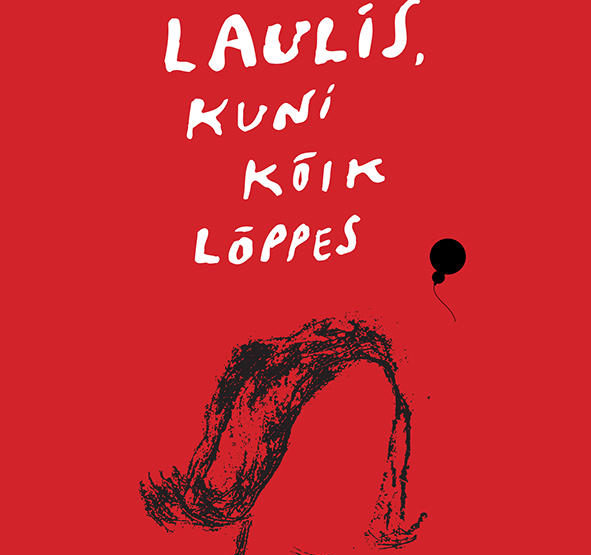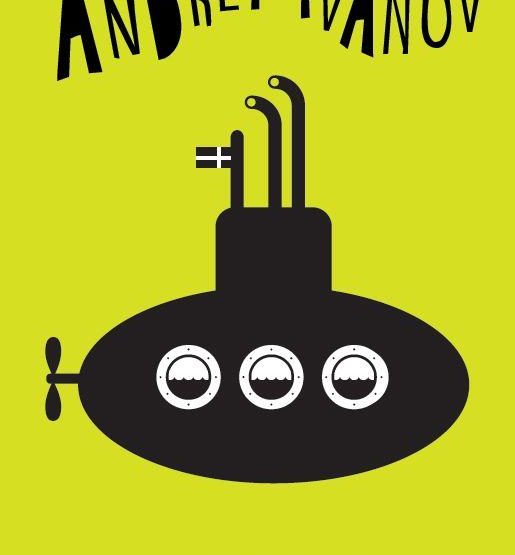In the late 1990s, Sergei Issakov (1931–2013), who was born in the border town of Narva and taught Slavic studies in Tartu his entire career, proposed in the Russian-language Estonian cultural magazine Raduga the concept of “Estonian-Russians” (Estonian eestivenelased, Russian эстонские русские) as a way to describe the multicultural, hybrid identity of native Russian-speakers living in Estonia. The Russian-language poet, teacher, and translator of Estonian literature into Russian Boris Baljasnõi (b. 1957) issued a call in 1999 for Russian-language writers residing in Estonia to cooperate more closely with Estonian-language authors, to pay closer attention to current affairs in Estonia, and to address local readers (whether Estonian- or Russian-speaking) in their works more often.[1]
These appeals made by Estonia’s Russian-speaking cultural elite fell upon fertile soil, for after the turn of the century several new noteworthy Estonian-based authors writing in Russian surfaced. Over time, the new generation of Russian-speaking authors living in Estonia comprised not merely Russian-language writers with Estonian residency or citizenship, but an entire unique genre of Estonian-Russian writers. This type of literature, which proceeding from linguistic logic is akin to the concept of Baltic-German literature (i.e. German-language literature written in the Baltic states), fuses the Estonian and the Russian components and implies that although the literature in question is penned in Russian, it is, in essence, still a part of Estonian literature.
One can assuredly claim that the concept of Estonian-Russian literature has been actively used in Estonia for at least a decade, although the notion of Russian-language Estonian literature has not disappeared as a descriptor. Regardless of the fact that I am unable to base my claim on any empirical study, it is logical that the Estonian-Russian identity, which emphasizes multi-ethnicity and hybridity, is most suitable for the “newer” generation of Russian-speaking Estonians born in the 1970s, who can speak and work fluently in both languages but have decided to stick with Russian as their literary language. The names of three major authors of Estonian-Russian literature come to mind: Andrei Ivanov (b. 1971), P. I. Filimonov (b. 1975), and Igor Kotjuh (b. 1978). It appears that adopting the concept of Estonian-Russian literature (and, naturally, outstanding translations into Estonian) has helped to nudge these authors and their works into the realm of Estonian literature “proper”. As a result, one may confidently also regard Ivanov, Filimonov, and Kotjuh simply as Estonian writers, especially from an international standpoint. All three are listed among several other Russian-language Estonian members of the Estonian Writers’ Union, and the author profiles of both Ivanov and Kotjuh are included on the Estonian Literary Center’s web page.[2]
Nevertheless, these authors’ reception in the field of Estonian literature has not gone without a hitch, as Kotjuh has also written about in an academic study.[3] This is foremost because Estonian literature has traditionally been defined by language, although it is also due to the fact that Russian-language literature needs to first be translated into Estonian in order for it to disseminate in and be adopted by the Estonian cultural space (the younger generations of native Estonian-speakers are generally not proficient in the Russian language). In 2012, a heated debate broke out over Andrei Ivanov’s novel A Handful of Dust (Peotäis põrmu, 2011) not being nominated for the Cultural Endowment of Estonia’s annual award for literature. In retrospect, the disagreement can be regarded as noteworthy, since it turned out that the majority of the Estonian cultural public perceives Estonian-Russian literature as a clear part of Estonian literature as a whole, despite the fact that the formal government structures didn’t support the idea at the time. A Handful of Dust addressed topical Estonian issues and was published in the Estonian language, though it was translated from a Russian-language manuscript. This meant that the novel didn’t fall into any existing award category: it was not a Russian-language work published in Estonia, but neither could the book compete in the category of translated literature, because the Russian-language original hadn’t been released. To complicate matters further, it couldn’t be categorized as Estonian literature, because it hadn’t been written in Estonian originally. Quite rightly, several disgruntled critics questioned whether language has any importance if a particular work clearly belongs to the Estonian cultural space.
Still, Ivanov himself holds a slightly different personal opinion of whether or not he is a part of Estonian literature. A member of the Estonian Writers’ Union since 2013, the author has somewhat resisted classifying his novels by nationality, favoring neither Russian nor Estonian. Rather, he prefers broader frameworks, such as “European literature”.[4]
In their 2017 scholarly article “Pain and promise of non-belonging: Andrei Ivanov’s exception in Estonian literature”[5], Eneken Laanes and Daniele Monticelli, professors and researchers of Estonian (and Estonian-Italian) literature and culture, treat Ivanov’s prose as supranational literature and claim that the identity of the author himself, but also of the characters he creates, is one founded on non-belonging and based on exception. Indeed, the characters and plots of Ivanov’s novels possess a broader international base because they often deal with migrants and globetrotters. One of Ivanov’s books, Hanuman’s Journey to Lolland (Hanumani teekond Lollandile, 2012), has been published in a German translation (Hanumans Reise nach Lolland, 2012) and was even staged in Hamburg.
Whereas Ivanov has striven to avoid national classifications, the poet Igor Kotjuh has always attempted to find compromise between the linguistic and the cultural spaces.[6] In 2008, he wrote – progressively and almost as a manifesto – that Estonian-Russian literature is a bridge between two national cultures and it certainly belongs to Estonia as a country, but people are still unable to implement it effectively. He noted that Estonia should show greater discernible appreciation for Estonian-Russian writers’ contributions to mediating the two cultural spaces, and encouraged authors themselves to translate (just as Baljasnõi did a decade earlier). Additionally, Kotjuh floated the idea of establishing some kind of Estonian-Russian literary center to serve as a mediating body.[7]
Since not much more can be done on the state level besides providing financial support for translations, not forgetting to include Estonian-Russian authors when introducing Estonian literature internationally, and giving formal recognition to authors in the genre (for example, in 2011 Igor Kotjuh received the Young Cultural Figure Award, which is given out by the Estonian president), a great deal depends on people themselves. One can state with assurance that Kotjuh has become a leading figure of and spokesperson for Estonian-Russian literature. He has become the sensitive and empathetic bridge between the two cultural spaces, of which he wrote. In addition to all of his other cultural-mediation activities – being on the board of the Estonian P.E.N. Club, co-organizing the Head Read literary festival, etc. – Kotjuh created in 2012 the bilingual Facebook profile “Est Lit Locus”, which actively communicates information about Estonian literature in Russian, and about Russian and Russian-language Estonian literature in Estonian. On 12 January 2018, for instance, Kotjuh posted through Est Lit Locus an overview of the Russian-language books and the Estonian translations of Russian-language books published in Estonia the previous year.
In summary, Estonian-Russian literature is definitely not a homogeneous phenomenon, just as the Estonian-Russian identity is impossible to comprehensively define. Likewise, there is a large volume of Russian-language literature published in Estonia that cannot be classified as either Estonian-Russian or Estonian literature. Such books may, perhaps, not even endeavor to fit into the category, but it is a fact that Estonian-Russian literature has a secure place within the genre of Estonian literature as a whole.
The following is an excerpt from Igor Kotjuh’s poem “100 lines about love for my homeland”:
что интересно
моя родина – эстония
а родина моего языка – россия
я живу здесь
он живет там
я читаю эстонские книги
мне близка их ментальность
я читаю русские книги
чтобы развивать свой язык[8]
huvitav
minu kodumaa on eesti
kuid mu keele kodumaa on venemaa
mina elan siin
tema elab seal
ma loen eesti raamatuid
nende mõtteviis on mulle lähedane
ma loen vene raamatuid
et arendada oma keelt[9]
strange
my homeland is estonia
but my language’s homeland is russia
i live here
it lives there
i read estonian books
their way of thinking is familiar
i read russian books
to advance my proficiency[10]
[1] Kotjuh, Igor. “Eesti venekeelse kirjanduse nullindate põlvkond: vastuvõtt ja tõrked omaks tunnistamisel”. Methis 2013, p. 66.
[2] Ivanov: http://www.estlit.ee/elis/?cmd=writer&id=55407
Kotjuh: http://www.estlit.ee/elis/?cmd=writer&id=18235
[3] Kotjuh, Igor. “The Generation of the 2000s in the Russian Literature of Estonia: Acceptance and Obstacles to Acknowledgement”. Methis 2013.
[4] Afanasjev, Vahur. “Rahvusvahelise kirjanduse kodanik Andrei Ivanov”. Eesti Ekspress, 1 December 2012.
[5] Laanes, Eneken; Monticelli, Daniele. “Mittekuulumise valu ja võimalus: Andrei Ivanovi erand eesti kirjanduses.” Keel ja Kirjandus, 1/2017. pp. 41–57. An English-language extract is included at the end of the article.
[6] I have discussed at greater length the different senses of belonging (non-belonging vs. multiculturalism) of the creative egos of Andrei Ivanov and Igor Kotjuh in a German-language article written together with Olga Bazilev: “Die Frage nach dem ›Anderen‹. Literatur als Spiegel und Gegenbild nationaler Identitäten am Beispiel der estnischen und lettischen Gegenwartsliteratur”, which was published in the collection Zum Beispiel Estland: das eine Lande und die vielen Sprachen (Göttingen 2017, composed by Silke Pasewalck, Anna Bers, Reet Bender).
[7] Kotjuh, Igor. “Eestivene kirjanduse homne kasu”. Eesti Päevaleht, 26 January 2008. http://epl.delfi.ee/news/kultuur/eestivene-kirjanduse-homne-kasu?id=51116971
[8] Published in Russian as: Kotjuh, Igor. Estonskiy dizain: stikhi 2009–2013. КИТЕ MTÜ. Tallinn 2013. pp. 37–38
[9] Published in Estonian as: Kotjuh, Igor. Kuidas kujutada päeva?. KITE MTÜ. Tallinn 2015. pp. 58–59.
[10] English translation from the Estonian by Adam Cullen
Aija Sakova (1980) is an Estonian literary scholar and critic. Since 2017, she has been a senior researcher at the Estonian Literary Museum’s Estonian Cultural History Archives. Her most recent book, Pain, Memory, Literature. Literary Critique and Conversations 2004–2017 (Valu, mälu, kirjandus. Kirjanduskriitikat ja vestlusi aastatest 2004–2017), was published in 2017.




